Business Intelligence (BI) systems are designed to transform raw data into actionable insights through data collection, data processing, and analytics. Financial institutions leverage BI solutions to ingest large amounts of complex financial data and build dashboards to monitor transactions. Such BI solutions allow them to detect financial fraud and generate insightful reports to manage risks and meet compliance.
Business Intelligence (BI) helps financial institutions get profound insights into their operational complexities, customer expectations and behavior, and market shifts. BI reporting enables institutions to identify actionable trends in customer or transaction data, make well-informed decisions, find automation opportunities, and improve compliance processes.
According to a survey by Deloitte, companies that have CEOs making data-driven decisions are 77% more likely to succeed.
One of the key advantages of using BI for compliance is real-time monitoring capabilities.
BI platforms are capable of continuously collecting and analyzing data from multiple sources. For instance, BI tools can analyze transactions, financial records, and employee activities to identify patterns that may indicate non-compliance.
This enables businesses to take corrective action in real-time, minimizing the risk of regulatory breaches.
However, Gartner also found that 87% of organizations have low BI and analytics maturity.
Steps to Setup and Use BI for Compliance and Proactive Risk Management
Below are some steps that banks or financial institutions can follow to set up BI for regulatory compliance:
Step 1: Define Requirements and Objectives
Begin with identifying the applicable regulatory requirements — law, regulation, statutory body — based on the financial service. For example, OFAC sanctions program, Dodd-Frank Act, FDIC, CCPA, and Sarbanes-Oxly Act (SOX) are some of the prime considerations.
To get started, create a checklist of the reports, data points, and audit processes required for compliance with each regulation.
Step 2: Select the BI Tool
There are various business intelligence tools, each with advantages and disadvantages. Thus, it is crucial to choose a BI platform that caters to the specific needs of banks and financial services and offers insights for managing risks, customer expectations, and effective decision-making.
For example, BI tools that offer pre-built templates or plugins can help banks automate the formatting of reports per the regulatory requirements.
Some examples of business intelligence tools are PowerBI, SAP Business Objects, and Kani.
Step 3: Integrate Data Sources
Data is the fuel for business intelligence. To ensure comprehensive compliance management, integrate or combine the various sources, such as transaction logs, databases, and other operational data.
BI tools come with integration features that allow the ingestion of structured and unstructured data from various sources. By combining multiple data sources into a single BI tool, banks and financial institutions can track compliance issues in real-time.
Step 4: Automate Compliance Monitoring and Reporting
Traditional compliance tracking is time-consuming and prone to errors. However, with BI tools, you can automate the compliance tracking and reporting process with real-time reports on the current status of compliance.
You can use the BI tools features to schedule or generate reports regularly. It can be daily, weekly, or monthly reports based on the compliance or regulatory requirements in the financial services industry or specific to regulations.
It can also send alerts or notifications to the teams if any deviation from required standards is detected.
Proactive Risk Management with BI
Business Intelligence tools also help classify, categorize, and prioritize risks based on their severity levels and likelihood. For this, financial institutions can leverage data mining and machine learning algorithms in the BI tool.
- Banks or financial institutions can use them to, for example, analyze previous incidents, identify patterns, etc., to predict future risks. The BI tools can also automatically classify risks, such as operational, financial, or cybersecurity risks, making it easier to take necessary actions to mitigate them.
- Leverage the BI tools to set dashboards for tracking risk indicators and get real-time monitoring updates, such as unusual or suspicious transaction patterns, anomalies, etc., based on set thresholds.
- Use predictive models in BI tools to simulate different risk scenarios. They can also help assess potential impacts and generate heat maps to visualize risk exposure in various departments. As a result, it helps prepare contingency plans for high-risk scenarios.
The following are some best practices to achieve this and avoid errors or false triggers:
- Invest in data governance, as data completeness and accuracy of the data will affect the tool’s effectiveness.
- Foster collaboration across departments with accessible and easy-to-understand BI dashboards.
- Talk to the BI solution provider to customize the dashboards, reports, and alerts to meet the compliance and organization’s specific requirements.
- Continuously monitor the effectiveness and evaluate the impact of BI on compliance performance and risk management.
Conclusion
The cost of non-compliance is profound. When it comes to regulatory compliance and risk management, BI plays a crucial role in helping financial institutions identify, assess, and mitigate risks and monitor their adherence to laws and regulations.
By leveraging BI tools, organizations can streamline compliance processes, proactively manage risks, and enhance their decision-making capabilities through real-time data insights.
At Anaptyss, we help banks and financial institutions enhance compliance and risk management with Factum, our BI dashboard.
Factum offers real-time insights, automated reporting, and tailored dashboards, enabling proactive risk management and regulatory compliance. To learn more or request a demo, reach out to us at info@anaptyss.com.



